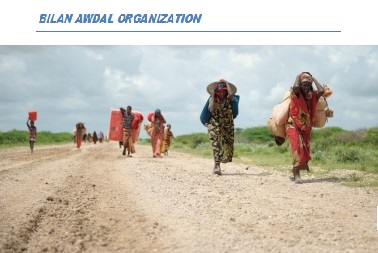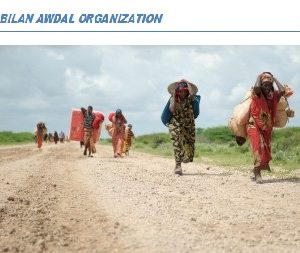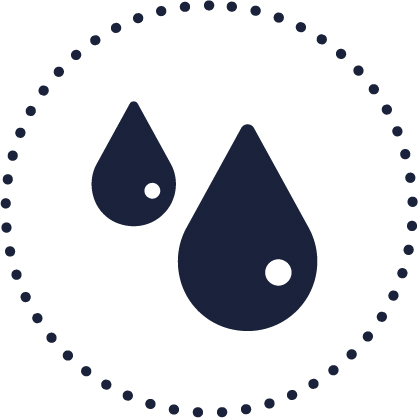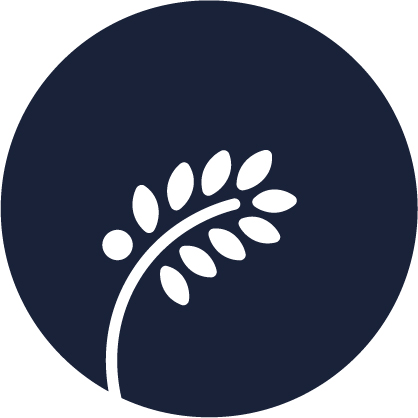Endorsement of Concept note for Water Project Somaliland.
Somaliland locates in drought prone areas, there are frequent long dry seasons, droughts are recurrent, there are no year perennial rivers, the only available are dry season rivers which depend on ra

Overview of the project

Realizing the problem contained in the problem statement above, this Ministry develops and forwards the following objectives:-
· To mitigate the effects of droughts and the drastic water shortages in rural and urban areas of the country by carefully and selectively exploiting surface and groundwater.
· To introduce integrated water resources management utilizing renewable energy and when necessary coupling (combined systems) that with electricity and creating income generating including community sanitation facilities and supplementary irrigation
It is in that regard that the Ministry of Water Resources submits this Concept Note to the Ilam Bank development to support by financing proposed projects as prioritized in this paper. Our objective is to devise and deliver a credible idea as contained here with justifications and assurances that we can deliver lasting solutions to the problem at hand as stipulated below.
(a) Rural Hafir Dams; (b) Peri-urban; (c) Strategic Boreholes and (d) urban IDP’s, mainly Hargeisa.
IV. Project Goals & Objectives
In order to tackle the above mentioned problems, the Ministry has developed the following objectives:-
· To mitigate the effects of droughts and the drastic water shortages in rural and urban areas of the country by carefully and selectively exploiting surface and groundwater.
· To introduce integrated water resources management utilizing renewable energy and when necessary coupling (combined systems) that with electricity and creating income generating including community sanitation facilities and supplementary irrigation.
· It is in that regard that the Ministry of Water Resources submits this Concept Note to the OIC to support by financing proposed projects as prioritized in this paper. Our objective is to devise and deliver a credible idea as contained here with justifications and assurances that we can deliver lasting solutions to the problem at hand as stipulated below.
V. Proposed Activities:
v Construction of 6 new HafirDams in Haud Plateau to insure provision of enough safe and/sanitary to rural communities and their livestock in drought prone area.
v Drilling of 10 strategic boreholes to mitigate water shortage.
v Construction of ten mini water systems and 20 shallow wells in the coastal areas.
v Capacity building for the Ministry by drilling rig with all accessories , Bulldozer, maintenance crane, geophysical instruments, water quality monitoring equipment/media with reagents and Water Technology Institute or borehole development equipment (tools).
v Establish low cost sanitation and safe water for Peri-urban & IDP’s communities in all Somaliland towns to cope with IDP’s influx
v Establish low cost sanitation and safe water to HargeisaPeri-Urban & IDP’s
v Upgrade Strategic Boreholes standards by incorporating them with solar/electric light (combined systems), sanitation facilities, improving communities education/skills to maintain sanitary standards (capacity building)… these Strategic Boreholes are the only available water sources to those rural communities during the long dry seasons.
The civil strife of the eighties and early nineties and the devastating droughts that occurred in 2012, left Somali people in general and Somaliland in particular in appalling conditions as their livelihood as well as their water sources were destroyed. For instance, there were 6 (six) huge man-made dams built during the military rule in the Haud Plateau, that borders Ethiopia, for human and livestock use. Unfortunately, all were destroyed or are out of service due to lack of rehabilitation and rural areas could not cope with the resulting demand. Consequently, this had caused a huge human mass migration to towns which could not absorb those displaced people as all public services in towns were already in short supply. And so, water demand in urban areas increased exponentially when capacity of the Ministry is limited. In short, the Ministry of Water Resources needs assistance in its plan of re-establishing water facilities emphasizing in the following four thematic areas: (a)Rural HafirDams; (b) Peri-urban; (c) Strategic Boreholes and (d) urban IDP’s, mainly Hargeisa.
implementation
27,09,2020 end 21709,2021
Proposed Activities:
v Construction of 6 new HafirDams in Haud Plateau to insure provision of enough safe and/sanitary to rural communities and their livestock in drought prone area.
v Drilling of 10 strategic boreholes to mitigate water shortage.
v Construction of ten mini water systems and 20 shallow wells in the coastal areas.
v Capacity building for the Ministry by drilling rig with all accessories , Bulldozer, maintenance crane, geophysical instruments, water quality monitoring equipment/media with reagents and Water Technology Institute or borehole development equipment (tools).
v Establish low cost sanitation and safe water for Peri-urban & IDP’s communities in all Somaliland towns to cope with IDP’s influx
v Establish low cost sanitation and safe water to HargeisaPeri-Urban & IDP’s
v Upgrade Strategic Boreholes standards by incorporating them with solar/electric light (combined systems), sanitation facilities, improving communities education/skills to maintain sanitary standards (capacity building)… these Strategic Boreholes are the only available water sources to those rural communities during the long dry seasons.
The civil strife of the eighties and early nineties and the devastating droughts that occurred in 2012, left Somali people in general and Somaliland in particular in appalling conditions as their livelihood as well as their water sources were destroyed. For instance, there were 6 (six) huge man-made dams built during the military rule in the Haud Plateau, that borders Ethiopia, for human and livestock use. Unfortunately, all were destroyed or are out of service due to lack of rehabilitation and rural areas could not cope with the resulting demand.
Consequently, this had caused a huge human mass migration to towns which could not absorb those displaced people as all public services in towns were already in short supply. And so, water demand in urban areas increased exponentially when capacity of the Ministry is limited.
In short, the Ministry of Water Resources needs assistance in its plan of re-establishing water facilities emphasizing in the following four thematic areas:
(a)Rural HafirDams; (b) Peri-urban; (c) Strategic Boreholes and (d) urban IDP’s, mainly Hargeisa.
De silting of Dams
SN Activity location budget
1 Dilla Water Development Awdal 175000$
2 Idhanka Awdal 1 75,000$
3 Baki Awdal 175,000$
4 Boorama Water Agency Shaaba Boorama 400.000$
5 Idhanka Water Deelopment Idhanka 175000$
Subtotal 119000
Grand total 119000
organisation
Somaliland locates in drought prone areas, there are frequent long dry seasons, droughts are recurrent, there are no year perennial rivers, the only available are dry season rivers which depend on rainfall which dries up during the last months of the dry season, the nomadic people in Somaliland suffer from the water scarcity, which causes drastic damage in rural and urban areas l. Thus, water is naturally scarce. But, during the two short rainy seasons of Gu and Dayr (Spring and Autumn respectively & 3 months apiece), torrential average annual rainfall of about 350mm (though sporadic) and occasionally flood out tremendous amounts of water to the sea or to waste through evaporation and/or infiltration.
But, to alleviate water shortages, under the guidance of Bilan Awdal Organization NGO, for the last two decades, different institutions, the government, local NGO’s, INGO’s and others did and continue to do the commendable efforts by rehabilitation/construction of water resources to exploit surface and groundwater and thus increase the water availability, bringing once too scarce water within reach to a large sector of Somaliland Water sector to support the different water uses including domestic, livestock, agriculture and other important uses like industries..
.
Despite that, to date, access to safe and adequate water to most remains elusive. And one major reason is because little or no effort was made to improve Water Quality although safe and sanitary water is known to have a profound impact on public health.
It is estimated that over 78% of the rural populations do not have access to safe drinking water (WHO/UNICEF) and most obtain their water and that of their livestock from open sources:
springs, Berkads (man-made rectangular water catchment), shallow wells, dams, seasonal ponds most of which usually dry up in winter or during dry seasons or are often contaminated with livestock/human wastes that inundate the environment (wastes both dry and liquid are discharged to environment untreated) propagating water-borne diseases.
On the other hand, many factors that include civil strife and persistent droughts wiped out the country’s once huge livestock and sadly today, poverty prevails. Unfortunately, this had caused a huge human mass migration to towns where, however, public services are already in short supply or non-existent. And so, new IDP’s live in appalling conditions with no water and sanitation and live on humanitarian food handouts. We feel that this is one area where our Ministry needs immediate assistance so that the Ministry can provide them water and sanitation.
Additionally, another very important area the Ministry needs assistance is rehabilitation and/or building new Haafirs (huge man-made rain water catchments) in the Haud Plateau Region that neighbors Ethiopia, (a drought prone area), but which is of immense value to this country because it is where most of the livestock, the backbone of this country’s economy, is raised.
A third and very important area that this Ministry needs assistance in upgrading Community Strategic Boreholes across the country as they are the sole source of water supply to rural communities during long dry seasons. Such upgrading can be done by incorporating those (Strategic Boreholes) with solar/electric lights as well as with sanitation facilities and improving the basic knowledge/skills of the public through capacity building.
In conclusion, the Ministry of Water Resources finds it an imperative to write and forward this petition to the Islam bank development Bank Livelihood Project of which the Ministry considers are morally obligated to support us in our pursuit of providing safe and sanitary water to all Somaliland communities in general and those areas mentioned in this Concept Note in particular.
Amoud Foundation Somalia and Africa Education Trust Somaland
and UNDP Somalia and Ministry of Agriculutre Somalilabd and
Some Germany Organization


